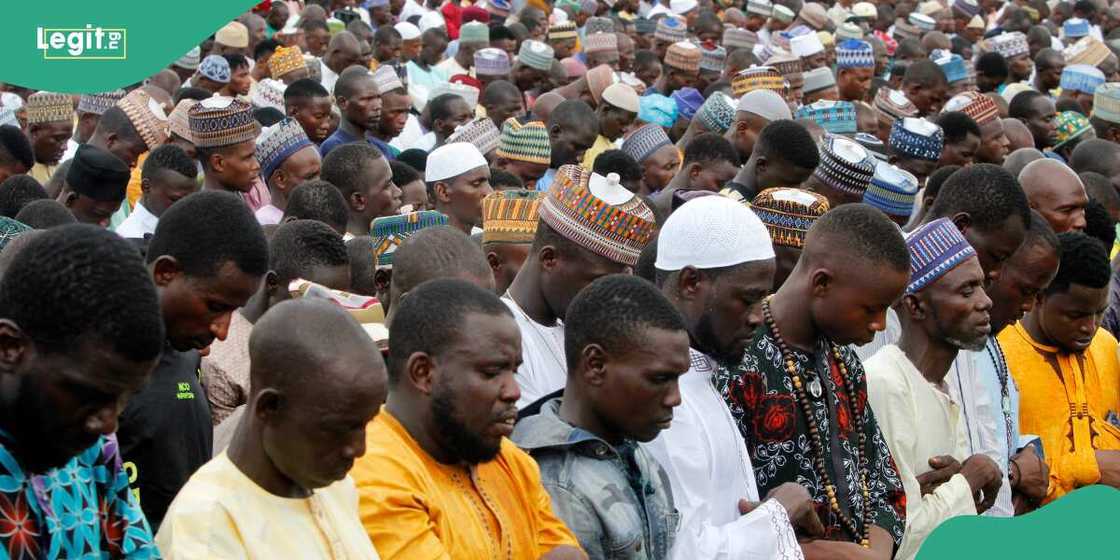Eid Al Adha 2025: Why Some Countries Observe on June 6, Others on June 7
- Eid Al Adha 2025 will be observed on different dates across various countries, with celebrations taking place on June 6 or June 7, depending on local moon sighting practices
- Saudi Arabia, the UAE, Oman, Qatar, Australia, and Indonesia will mark Eid on June 6, while Pakistan, Morocco, Mauritania, and several other nations will observe it on June 7
- Despite these differences, Eid Al Adha remains a significant occasion for Muslims worldwide, commemorating Prophet Ibrahim's devotion and sacrifice
Several countries worldwide determined their dates for Eid Al Adha 2025, with celebrations falling on either June 6 or June 7.
The variation in dates stemmed from differences in moon sighting practices and religious authorities' announcements.

Source: Getty Images
Countries celebrating Eid Al Adha on June 6
Saudi Arabia, the United Arab Emirates (UAE), Oman, Qatar, Australia, and Indonesia confirmed their observance of Eid Al Adha on June 6. Each country relied on traditional crescent moon sightings to set the date.
- Saudi Arabia: Officials marked Eid Al Adha on June 6 following the sighting of the Dhu Al Hijjah crescent moon, signifying the conclusion of the annual Hajj pilgrimage.
- UAE: The moon was sighted, fixing Eid for June 6, with the Day of Arafat falling on June 5.
- Oman: Authorities confirmed the sighting, aligning Eid with June 6, following Arafat Day on June 5.
- Qatar: The nation declared May 28 as the first day of Dhu Al Hijjah, setting Eid for June 6.
- Australia: The Grand Mufti announced Eid celebrations for June 6.
- Indonesia: The Ministry of Religion verified the crescent sighting, officially marking Eid on June 6.
Countries observing Eid Al Adha on June 7
Pakistan, Morocco, and Mauritania announced that the crescent moon was not sighted on May 27, delaying the start of Dhu Al Hijjah to May 29.
Consequently, Eid Al Adha would be observed on June 7 across several nations, including Brunei, Malaysia, India, Bangladesh, Pakistan, Morocco, and Mauritania.

Read also
Reverend Azzaman's burial date and arrangements announced days after car crash, family seeks support
- Pakistan: The Central Ruet-e-Hilal Committee confirmed the absence of the crescent moon, setting Eid Al Adha for June 7.
- Malaysia: Authorities stated that the moon was not visible, fixing Eid for June 7.
- Brunei: The nation aligned its decision with Malaysia, scheduling Eid Al Adha on June 7.
- India: Regional moon sightings indicated Eid celebrations on June 7.
- Bangladesh: Officials were set to announce the official date, but a government holiday spanning June 5–14 was already approved in observance of the festival.
Why Do Eid Al Adha dates differ?
The discrepancy in Eid Al Adha observance arises from regional differences in moon sighting methods.
Since the Islamic calendar follows lunar cycles, countries rely on local religious authorities to declare the start of Dhu Al Hijjah based on moon observations.
Despite the variations, Eid Al Adha remains a unifying celebration for Muslims worldwide, commemorating Prophet Ibrahim’s devotion and willingness to sacrifice for God.
What is Eid Al Adha?
Eid Al Adha, or the Feast of Sacrifice, marks the completion of the annual Hajj pilgrimage.
Observed on the 10th day of Dhu Al Hijjah, the festival honours Prophet Ibrahim’s (Abraham’s) unwavering faith. It is a time of worship, familial gatherings, gift exchanges, and charitable acts.
Significance of Arafat Day
The Day of Arafat, observed on the ninth of Dhu Al Hijjah, precedes Eid Al Adha. It is a pivotal day during Hajj, where pilgrims assemble at Mount Arafat to engage in prayers and reflection. Prophet Muhammad (peace be upon him) delivered one of his final sermons at this site.
For non-pilgrims, Arafat Day is a revered occasion for fasting and spiritual reflection, with many Muslims engaging in acts of devotion.
Source: Legit.ng




